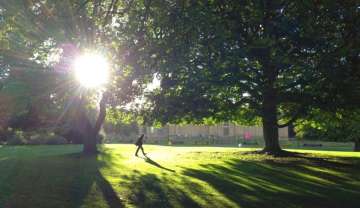As north-east Delhi witnessed three days of deadly violence, which took over 40 lives in the capital, a new study suggests that properly designed and maintained outdoor green space has the potential to reduce violent crime and gun violence, to make communities safer and keep residents healthier.
Conversely, green space that is poorly designed and inadequately maintained can help crime take root and spread, the researchers said.
The findings, published in the International Journal of Environmental Research and Public Health, come from a team of scientists that has assembled a big-picture review of research on the complicated relationship between nature and crime in urban areas.
They identified several patterns that can help inform public policy, guide urban design and promote neighbourhoods that are safe and pleasant to live in.
"How to control violent crime is a polarising issue. We are interested to see, as designers whose work is to shape the physical environment, if it's possible for us to contribute to this conversation and to take some actions to see if we, personally, can contribute to reducing crime," said study researcher Hessam Sadatsafavi from University of Virginia in the US.
The research sought to synthesize the findings of many previous studies that looked at the effects of various forms of green space on crime and criminal behaviour. The researchers initially considered more than 14,000 papers but ultimately winnowed those down to 45 done in the US, which offered the most relevant insights into how access to nature might improve public safety.
According to the researchers, the initial review was challenging because the topic is vast and can be approached from many angles. "You might talk about community gardens, you might talk about people's lawns," Sadatsafavi explained. "People who do the studies might go out and count the number of trees on sidewalks, or examine satellite images. Or look at the number of vacant lots that were turned into green space,"he said.
That, combined with the wide variety of crime examined and how it was reported, made it difficult for the researchers to draw specific conclusions. "But, there are definitely patterns," Sadatsafavi said. For example, nine studies looked at the effect of green space on gun violence. Six found that such interventions reduced crime, while three were inconclusive.
"There is evidence that greening interventions at the urban level reduces violent crime, specifically gun violence," he said. "By looking at all these studies, we were able to propose possible pathways (to reduce crime and) put together an overall picture of why this is happening, both in terms of gun violence and in terms of overall crime rate," he concluded.

